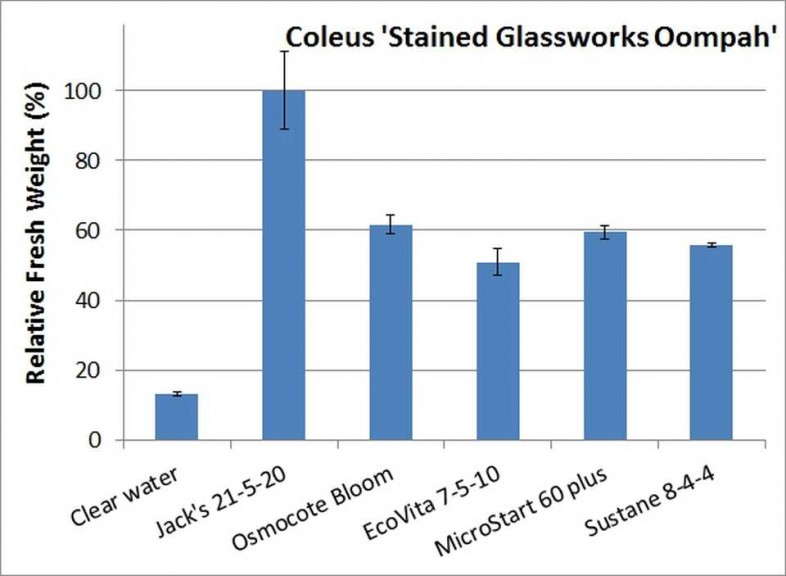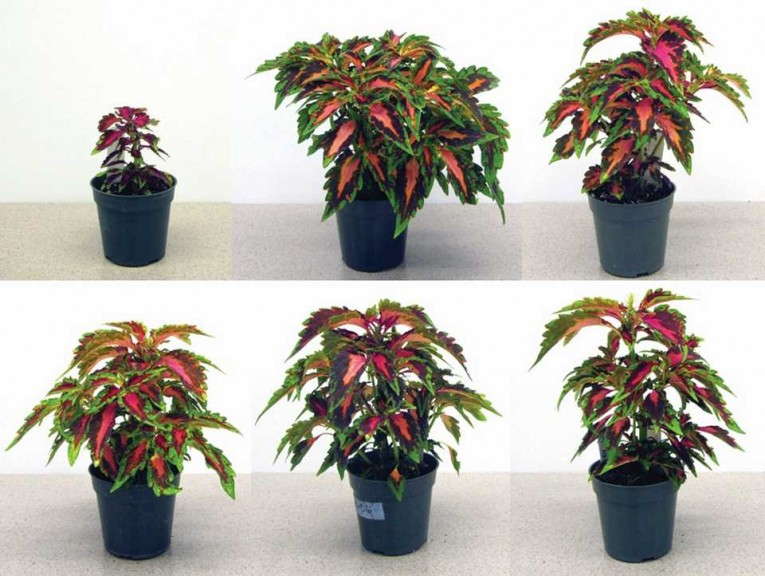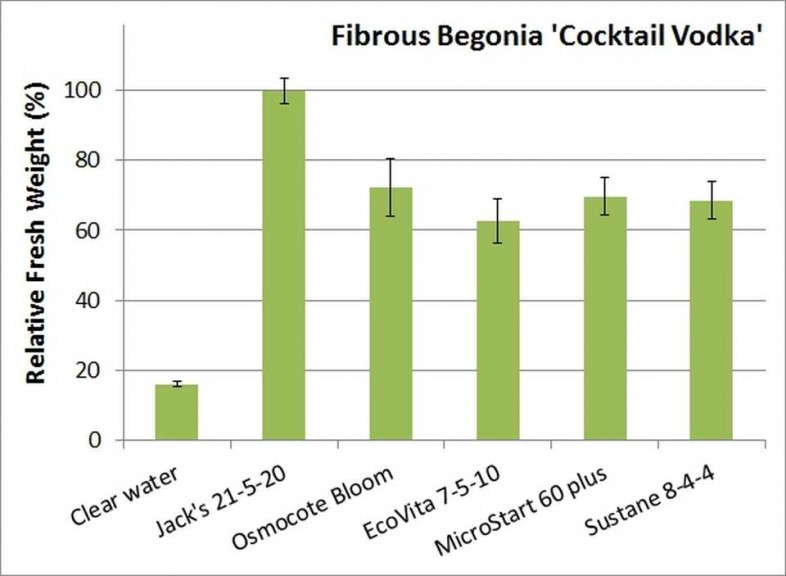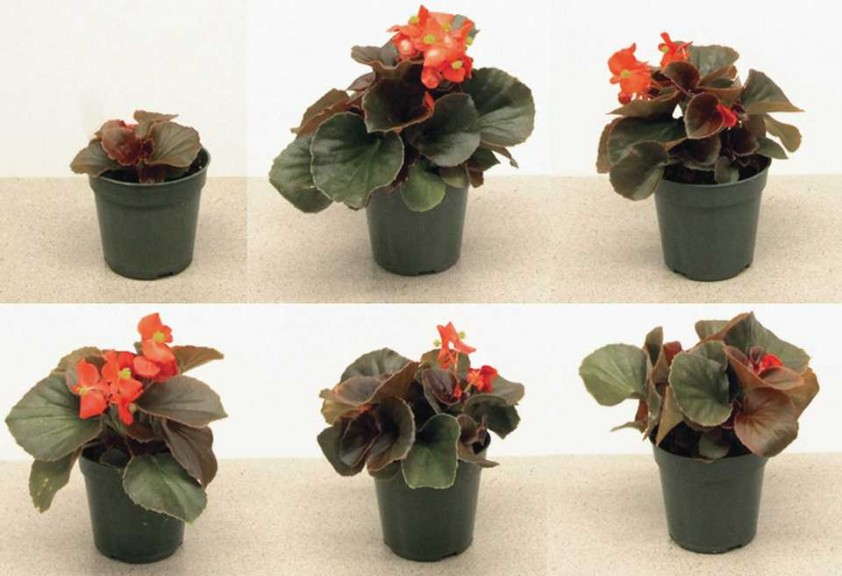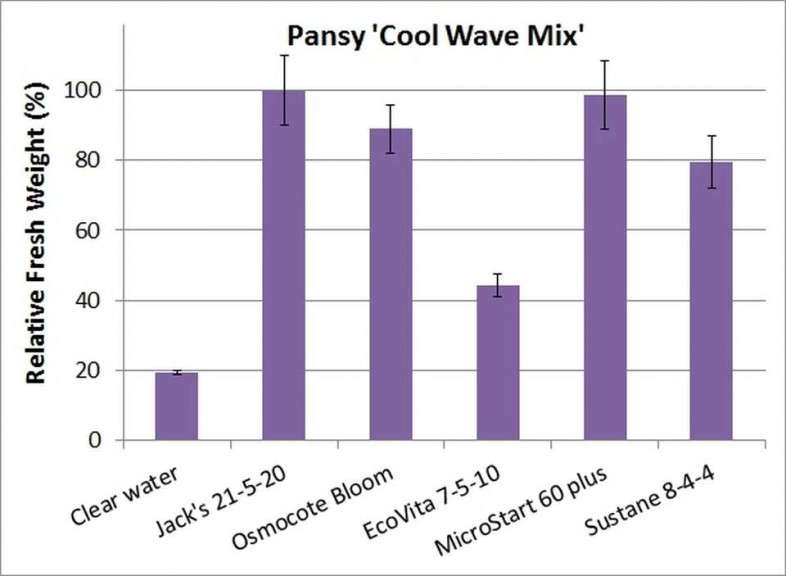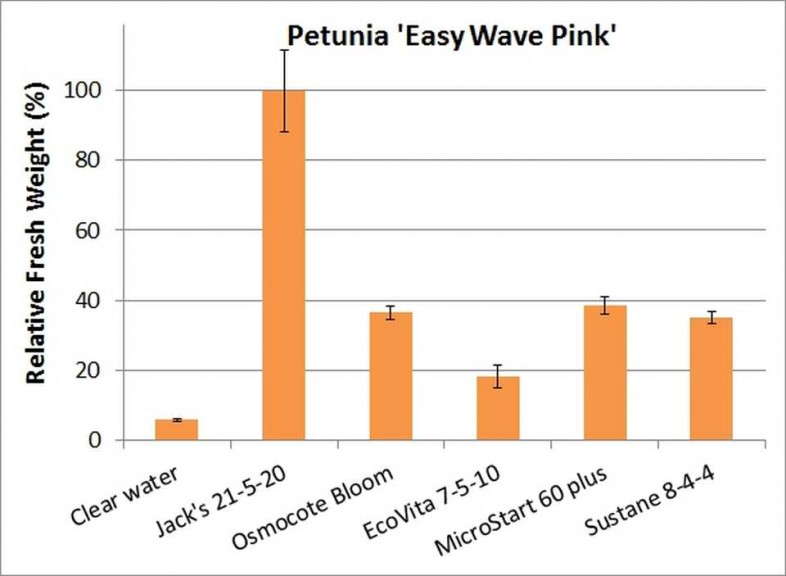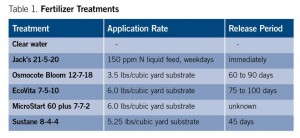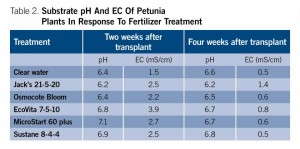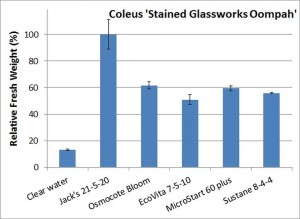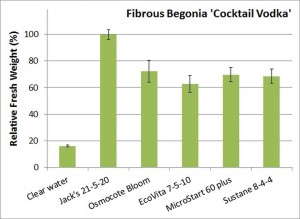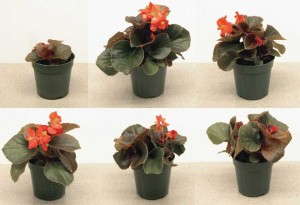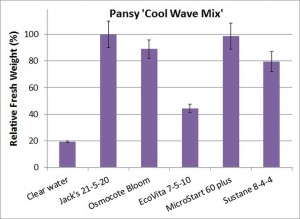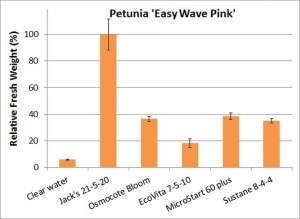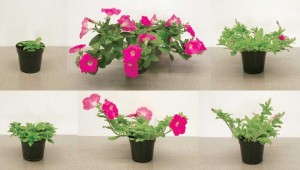Basics & Beyond: Comparing Substrate Fertilizer Amendments For Spring Bedding Plants
Several slow release fertilizers (SRFs) are on the market that may be useful as substrate amendments to provide all or part of container plant fertilizer needs. Some of these materials have a release period of six to 10 weeks, and these fertilizers might be particularly useful for short-turn spring bedding plants. Because these SRFs have different nutrient contents, are made from different components and have different forms of release, it can be challenging to know how to use them successfully.
[blackoutgallery id=”64037″]
Methods Used To Determine If SRFs Can Replace Liquid Fertilizer
We conducted an experiment at Cornell University to determine if substrate-incorporated SRFs could be used to replace or reduce the need for liquid fertilization for four different spring crops. The fertilizer treatments included two controls: 1) clear water to determine how plants performed without added fertility and 2) liquid feed with 150 ppm nitrogen from Jack’s 21-5-20 every weekday as representative of common commercial practices.
Four different SRFs were used, including Osmocote Bloom 12-7-18 and three granular organic fertilizers: Verdanta EcoVita 7-5-10, Perdue MicroStart 60 plus 7-7-2 and Sustane 8-4-4. The three granular fertilizers are OMRI-listed (Organic Materials Review Institute) for certified organic production, though we did not follow other organic methods (such as pest control) in this experiment. All of the SRFs used had a relatively small prill or granule size that is suitable for incorporation and use in small containers. Because the SRFs differed in their nutrient composition, we applied different amounts of each so the amount of applied nitrogen was the same (0.42 pounds N per cubic yard substrate, Table 1, see slideshow).
The plant material used was: coleus ‘Stained Glassworks Oompah,’ fibrous begonia ‘Cocktail Vodka,’ pansy ‘Cool Wave Mix’ and petunia ‘Easy Wave Pink.’ The coleus came from 52-cell liners, and the other crops from 288-cell plug trays from a commercial propagator.
On March 7, 2014, we prepared the fertilizer treatments by incorporating the SRFs into a commercial potting mix, Lambert LM-111, which is a peat- and perlite-based substrate with a starter nutrient charge and pH adjusted to 6.0. On March 10, plants were transplanted into 4-inch round containers (500 mL volume) and moved to the greenhouse with 75°F day and 68°F night temperature set points.
To determine the effect of fertilizer treatment on substrate pH and electrical conductivity (EC), PourThru measurements were taken of five representative petunia plants at two and four weeks after transplant. When the plants were considered to be commercially marketable, they were destructively harvested to determine shoot fresh weight as a measure of overall plant growth. This was five weeks after transplant for coleus and pansy, six weeks for begonia and seven weeks for petunia.
Comparing pH And EC Rates In SRFS And Liquid Fertilizers
Pansy and petunia are sensitive to iron deficiency at high substrate pH; therefore, pH should ideally be maintained at 5.4 to 5.8. The suggested pH for fibrous begonia and coleus is 5.5 to 6.3. The tap water used in our experiment is somewhat alkaline (110 ppm CaCO3), so we expect substrate pH to rise over time.
At two weeks after transplanting, only pH from the 21-5-20 treatment was in the recommended range. This makes sense, as 21-5-20 is moderately acidic (40 percent of its nitrogen is in the form of ammonium or urea). The pH was a bit higher than optimal (pH 6.4) for the clear water only and Osmocote Bloom treatments. Use of the granular organic SRFs led to a pH higher than recommended (pH 6.8 to 7.1).
Four weeks after transplanting, the same patterns were evident of elevated pH for the SRFs. We recommend that producers using SRFs adjust for this pH effect. If using alkaline irrigation water, they should work with their substrate supplier to reduce the initial limestone addition.
EC is a measure of all salts, including fertilizer and non-fertilizer salts. When liquid feed is used as the main fertilizer source and with fairly pure (low-salt) irrigation water, then EC is a good measure of overall plant fertility. Coleus, begonia and pansy are considered to have light nutrient requirements with a suggested PourThru EC of 1.0 to 2.6. Petunias have medium nutrient requirements with a suggested EC of 2.0 to 3.5.
A challenge of using SRFs is that EC measurements developed for liquid fertilizers may not be applicable, as much of the fertilizer salts are slowly available over time and not immediately measurable. Therefore, a low EC may not necessarily indicate low fertility. A high EC may still indicate elevated salt levels, which can be damaging to plants.
Two weeks after transplanting, the EcoVita treatment exhibited a pH considered too high for petunias, and Microstart and EcoVita had an EC higher than desirable for the coleus, begonia and pansy. By four weeks after transplanting, EC for the 21-5-20 liquid fertilizer treatment was 1.4, which is considered appropriate for the light feeders but too low for petunia.
After four weeks, the ECs of all the SRFs, as well as the clear water control, were less than 1.0. This suggests that much of the available fertility had been absorbed by the plant or lost to leaching between weeks two to four. The EC measurement does not indicate how much fertility is left remaining in the prills/granules of the SRFs.
Substrate Incorporated SRFs Reduce Reliance On Liquid Fertilizer
Regarding plant growth, the liquid fertilizer treatment led to the greatest fresh weight for all four bedding plant crops in our study. To aid in comparing the fertilizer treatments, we divided plant fresh weight by the 21-5-20 control to determine relative fresh weight. Plants that received clear water were very small, only 5 to 20 percent of the fresh weight as the liquid fed plants. This was expected, as typically substrate starter nutrient charge is not sufficient for plant growth for more than two weeks.
It is interesting to note that in many cases, the granular organic materials produced a plant of similar size to the Osmocote Bloom plants. For coleus, a light feeder, the plants receiving SRFs were all about 50 to 60 percent of the size as the liquid fertilizer (21-5-20) plants. For fibrous begonia, the use of the SRFs led to a plant that was about 70 percent of the size of liquid fertilizer for the Osmocote Bloom, MicroStart and Sustane treatments, and about 60 percent of the control size for EcoVita.
For pansy, which had a shorter production time, use of MicroStart led to a plant with a similar size to liquid fertilizer. Osmocote Bloom and Sustane led to a plant that was 80 to 90 percent of the size of controls. Plants in the EcoVita treatment were 45 percent of the size of the controls. This may be explained by the relatively slow release period of EcoVita as compared to the other SRFs, and the quick cropping time of pansy (five weeks), which suggests that much of the fertility from the EcoVita treatment was still held in the granules.
For coleus, begonia and pansies, the plants that received SRFs achieved a commercially marketable size, but with a smaller plant form in many cases than liquid fertilizer. The smaller plant form may be desirable for a tightly spaced crop and reduces the need for plant growth regulators. In the case of petunia, which has heavier fertilizer requirements, the SRFs at the applied rate did not yield a marketable plant. Size was about 35 to 50 percent of control size for Osmocote Bloom, Microstart and Sustane, and 20 percent of control size for EcoVita. This suggests that for petunia and other heavier feeding crops, SRFs may need to be used at a higher rate or combined with liquid feed.
Strategies For Using SRFs
Overall, our results suggest that substrate incorporated SRFs may be successfully used to reduce reliance on liquid fertilizer. One strategy is to use substrate incorporated SRFs as the base feed for all crops. For light feeders, this may provide enough fertility. For heavier feeders or crops with a longer production period, liquid feed could be used to supplement the SRF fertilizer program.
More research is needed to determine optimal application rates of SRFs for a wider range of crop materials. When substrate incorporated SRFs are used, remember to use up the substrate within a week, as nutrients will begin to be released upon mixing. When implementing any new fertilizer practice, it is important to conduct small-scale trials under the conditions of your own growing environment.





